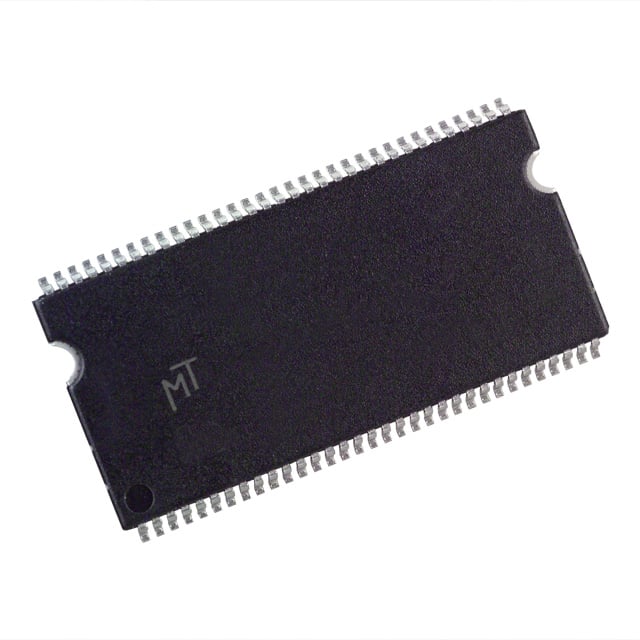The Russia-Ukraine conflict has affected the semiconductor industry chain: the game of material supply and chip sanctions has intensified
 2022-04-20 12:43:07
2022-04-20 12:43:07  857
857Our reporter Qin Feng reported from Beijing
The conflict between Russia and Ukraine is affecting many industries around the world, such as oil, grain, and chips. A few days ago, some countries in Europe and the United States announced sanctions against Russia, and major chip and technology companies have also announced the cessation of business with Russia. At the same time, Ukraine, as the world's largest supplier of electronic special gas (electronic special gas, also known as electronic gas, mainly neon, krypton, xenon, etc., is one of the core materials of semiconductors), whether this conflict will affect the supply of related gases and have an impact on the semiconductor industry, causing concern and concern from all parties.
A number of industry insiders told the "China Business News" reporter that Russia and Ukraine can only be regarded as raw material suppliers, not manufacturers, semiconductor downstream companies do not directly purchase from Russia and Ukraine, and electronic special gas manufacturers currently have sufficient reserves, the impact is small, but the phenomenon of rising prices in the short term cannot be ruled out.
Electronic special gas cut-off?
A few days ago, according to Reuters, the chip lithography machine giant ASML (ASML), which has a market value of more than $2600 billion, is looking for other sources of neon gas supply in case the conflict between Russia and Ukraine causes supply disruptions.
There are traces of this message. According to a report released by the research agency Omdia, Ukraine has important electronic special gas companies such as Iceblick, Ingas and Cryoin, accounting for more than 70% of the global neon gas supply, while the global supply share of krypton and xenon reaches 40% and 30%, respectively.
Electronic special gas is known as the blood of modern electronic industry, mainly used in semiconductors, liquid crystal displays, crystalline silicon solar cells, optical fibers and other fields. As the core raw material of semiconductor manufacturing, electronic gas is the largest material after silicon wafers. These rare gases can be used in the production of excimer laser light sources in ArF, KrF lithography machines and semiconductor etching, mainly used for DUV (deep ultraviolet) process technology of 8-inch wafer 250~130nm mature process, and CPU (central processing unit) based on Intel 10nm manufacturing process also relies on neon gas.
Kemet gas (002549. SZ) said that in helium, neon, krypton, xenon is the most expensive, especially aviation xenon, the higher the purity, the higher the price, the current tension between Russia and Ukraine, the price will continue to rise.
It is worth noting that the Crimean incident in 2014 led to a sharp increase in the price of electronic special gas, and the price of neon gas once increased nearly 10 times, reaching a high price of $3500,<> per cubic meter.
The research team of Huatai Securities believes that the share of Russia and Ukraine in the global semiconductor industry chain is very small, semiconductor raw materials are only a subdivision of applications, and raw materials such as palladium and neon, argon, krypton and xenon in Russia and Ukraine account for a low proportion of semiconductor costs. It is expected that semiconductor manufacturing demand can be stabilized through markup purchases, and the situation in Russia and Ukraine may only cause short-term or local fluctuations.
In fact, over the past year, the price of global rare gases has been rising since the second half of 2021 due to the escalating bilateral friction between Russia and Ukraine. According to data from Baichuan Yingfu, the price of neon gas (content 99.99%) in China has risen from 2021 yuan / cubic meter in October 10 to more than 400 yuan / cubic meter at present.
However, according to domestic and foreign semiconductor companies, the conflict between Russia and Ukraine has little impact on the industrial chain.
ASML said a few days ago that Ukraine produces less than 20% of its neon gas and is working to find other neon gas supply channels. Wafer foundry leader TSMC revealed to Morgan Stanley that in the fourth quarter of 2021, the gas inventory of wafer foundries in Taiwan has reached the 6-month level, which is enough to support 1~2 years of demand.
In response, chip companies such as Samsung, Intel, GF, UMC, Micron and SK Hynix also responded: "The situation between Russia and Ukraine has no direct impact on the company, and the company can find sources outside Russia and Ukraine, and the supply of materials is still stable at this stage." ”
Domestic electronic special gas producer Huate Gas also said that the escalation of the conflict between Russia and Ukraine will not have a big impact on the company, and in rare gases, the company has domestic suppliers.
"The semiconductor industry has a diverse supplier of critical materials and gases, so we do not see any direct supply disruption risk for critical materials and gases associated with Russia and Ukraine," the Semiconductor Industry Association (SIA) said. ”
"There are more than thousands of processes in chip manufacturing, the process involves the use of hundreds of electronic special gases, the technical barriers of electronic special gas are very high, and there are high technical requirements for gas purity, mixing accuracy, analysis and testing quality control, gas filling, cylinders, packaging, storage and transportation." Wang Zhiwei, a semiconductor analyst at Xintai Securities, told reporters: "To be more precise, the monopoly of the neon gas market is not a raw material producer such as Russia and Ukraine. At present, the electronic gas required for global semiconductors is monopolized by several leading enterprises in developed countries. The top four electronic gas companies Air Chemicals of the United States, Linde Praxair of Germany, Air Liquide of France and solar acid of Japan combined have a global market share of more than 90%. So it doesn't cause supply chain tensions. ”
The Russian semiconductor industry is under sanctions
As Russia's conflict with Ukraine escalated, Western countries, led by the United States, began to impose technology sanctions on Russia after announcing financial sanctions, mostly involving the semiconductor industry.
When the US Biden administration previously announced sanctions, it said that it would cut off more than half of Russia's imports of high-tech products, including chips, computers, telecommunications equipment, encryption security equipment, lasers and sensors. The U.S. Department of Commerce also included 49 Russian entities on the U.S. Entity List, mainly involving military-industrial enterprises and scientific research institutions.
At the same time, the United States issued export control measures against Russia in seven areas, stipulating that even if products produced outside the United States, as long as they use software and designs that are subject to US export control, they cannot export relevant products to Russia.
"The U.S. semiconductor industry is fully committed to complying with the new export control rules announced today in response to the deeply disturbing events in Ukraine," the SIA said. We are still reviewing the new rules to determine their impact on our industry. According to the World Semiconductor Trade Statistics Organization (WSTS), while the impact of the new rules on Russia may be significant, Russia is not a significant direct consumer of semiconductors, accounting for less than 0.1% of global chip purchases. According to 2021 IDC data, out of the $4.47 trillion global market, the broader Russian ICT (Information and Communication Technology) market totals only about $503.<> billion. ”
According to the export administration regulations announced by the United States, the sanctions against Russia include items such as semiconductors, computers, sensors, navigation equipment, avionics, marine equipment and aircraft components into the commercial control list license. Meanwhile, the U.S. Bureau of Industry and Security said in its rule sheet that it will adopt two complex foreign product rules. This means that the U.S. government will not only restrict the supply of products directly produced by U.S. companies, but also those products produced outside the U.S. using U.S. technology.
Following this, TSMC issued a statement saying it would comply with U.S. export control measures: "TSMC has a strict export control system, including a robust evaluation and review process to ensure that export control provisions are complied with." In addition, US chip manufacturers GF, Intel, AMD and others have also announced compliance with sanctions.
However, according to CNN, Apple recently announced that the company has stopped selling all products in Russia. Apple also said it would suspend the sale of Apple products in Russia and limit Apple Pay functions. In addition, the applications of Russia Today and Sputnik News Agency have also been removed from Apple's app store outside Russia.
Woody Oh, an analyst at Strategy Analytics, said that other leading smartphone OEMs (original equipment manufacturers) in Russia are likely to join Apple's actions in Russia in the coming days. If the current situation continues for a few weeks or months, Russia's smartphone market is likely to be severely affected, as Russia is one of the top five countries in smartphone shipments in recent years and one of the top ten countries in terms of smartphone revenue.
Spread across many parties
Industry insiders believe that after Russia is sanctioned by the United States and other technologies, it will naturally look for some alternatives. The commercialization base of the Russian semiconductor industry is weak, and there is currently no way to develop independently, and can only be purchased from other countries. Some Russian companies point to China as a potential seller. Prior to this, foreign media reported that if the West is unwilling to supply semiconductors to Russia, the rapidly developing Chinese semiconductor industry may benefit from it.
Wang Zhiwei told reporters that this is possible, but it should be taken into account that the "Foreign Direct Product Rules" (FDPR) imposed by the United States on Russia are directly related to the previous US sanctions against Huawei, and the products produced overseas "containing American technology" are included in the jurisdiction of the US judicial long arm. These products can be exported to Russia only with permission from the United States.
It is worth noting that a total of 32 countries and territories are excluded from this constraint, including EU member states, Australia, Canada, Japan, New Zealand and the United Kingdom. These countries and regions are imposing sanctions on Russia. South Korea, Chinese mainland, India and Taiwan, which have not imposed separate sanctions, are also subject to the FDPR.
A person in the semiconductor industry chain pointed out to reporters that it can be seen from the process of US sanctions against Huawei that at present, China cannot completely separate from US technology for the production of advanced process chips. Even the production of mature processes cannot be separated from American technology. But fortunately, according to the US sanctions, the export of some consumer-grade end products is not within the scope of restrictions, but the specific products have not been indicated, and domestic companies are still waiting and seeing.








